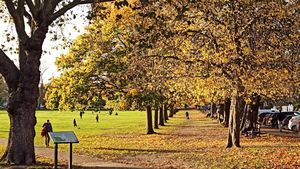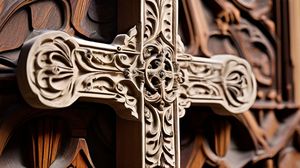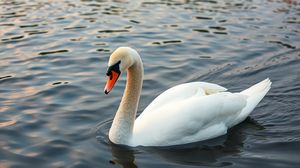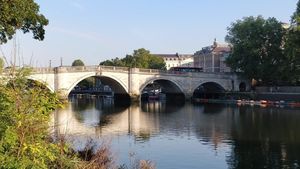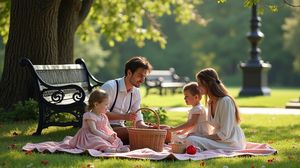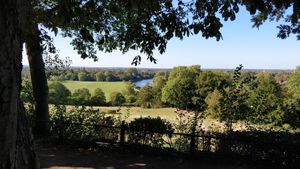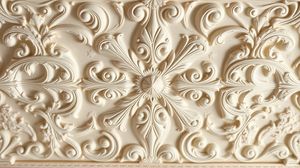
The Royal Botanic Gardens, Kew, is a world-renowned historic garden paradise that spans 330 acres and boasts one of the most diverse collections of living plants on the planet. Founded in 1759, Kew has long been at the forefront of botanical research and conservation, making it a must-see destination for plant enthusiasts and history aficionados alike.
Kew Gardens is home to an astounding 50,000 living plants across its expansive grounds and iconic glasshouses, such as the Palm House and Temperate House. The Temperate House, which recently underwent a major restoration, is the largest Victorian glasshouse in the world.
Visitors can explore the serene Japanese Landscape, complete with a traditional Japanese Gateway, or Chokushi-Mon, offering a cultural journey without leaving the gardens. This landscape is meticulously designed to reflect the harmonious beauty found in the art of Japanese garden design.
One of the most fascinating features of Kew Gardens is the Treetop Walkway, which allows you to venture 18 meters above ground for an intimate glimpse into the forest canopy. This aerial perspective offers a unique chance to see wildlife and flora from a whole new angle.
In addition to its plant collections, Kew is renowned for possessing one of the largest herbariums globally with over seven million preserved plant specimens. This makes it an invaluable resource for scientists and researchers around the world.
At the center of Kew, the grand Kew Palace stands as a jewel of British history. This 17th-century royal residence offers insight into the domestic life of Kings George III and Queen Charlotte, making it both a botanical and historical treasure.
Kew's diverse array of plants and landscapes isn't just for show; the gardens play a pivotal role in conservation efforts, including the Millennium Seed Bank Partnership, which works towards slowing the rate of plant extinction globally.
Art and nature come together beautifully at Kew Gardens, where rotating art installations and sculptures can be found dotted amongst the landscapes. This blend of culture and nature is sure to surprise and delight visitors at every turn.

Making the Most of Your Visit:
Arrive early if you can. Kew Gardens is vast, and you'll want to make the most of your day here. The gardens open at 10 am, and arriving early means you can enjoy some of the more popular spots like the Palm House or Treetop Walkway without too many people around.
Don't miss the little-known Marine House. It's tucked away beside the Palm House and often overlooked, but it contains some fascinating marine plants and a peaceful pond.
Spend time in the Temperate House. This isn't just the largest glasshouse at Kew but also a beautifully restored Victorian masterpiece. Even if you're not a plant expert, the architecture and the diversity of plants here are remarkable.
If you're visiting in spring or summer, pack a picnic and enjoy it on the lawns surrounding Kew Palace. It's an enchanting spot that allows you to experience a piece of London's royal history in a relaxed setting.
The Gardens by Kew Pier is one of the quieter spots, with idyllic views of the Thames. It's a wonderful place to unwind, and you might catch a glimpse of some interesting birds along the riverbank.

Visiting Times & Costs:
Opening Times:
- Kew Gardens is generally open daily, except for Christmas Eve and Christmas Day.
- Opening hours are typically from 10 am to 6:00 pm, with last entry usually an hour before closing. It's recommended to check current times as they can vary with seasons.
Admission Fees:
| Category | Price |
|---|---|
| Adults | £21.50 |
| Children (4-15 years) | £5.50 |
| Concessions | £19.00 |
| Children under 4 | Free |
Prices may vary, so it's advised to check for the most current rates, including any special exhibitions that may require an additional fee.
Accessibility:
- Kew Gardens is committed to being accessible for all visitors. Most of the paths are suitable for wheelchairs and there are mobility scooters available for hire.
- Accessible toilets are located around the gardens, and there is step-free access to many buildings including the glasshouses.
- Guide dogs are welcome in the Gardens.

Address & Map:

Nearby:








